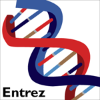Bioinformatics Central
This resource is designed to serve as a simple and direct guide for basic bioinformatics investigations by students in BIO 152 Principles of Biology III as well as upper-level courses.
What do you want to do?
Consider the scenarios below to determine which NCBI database you should use. Clicking on Tips will take you to a page that provides guidance for gathering information from each database and addresses common questions. Clicking on the name of the database will take you directly to that NCBI database or access the NCBI homepage directly.
About Bioinformatics Central
This resource is designed to serve as a simple and direct guide for basic bioinformatics investigations by students in BIO 152 Principles of Biology III. It is also intended to provide a common interface that will be useful to students as they need to employ various bioinformatic utilities in different upper-level electives. NCBI resources include text-based references (PubMed, Bookshelf, OMIM) and biological databases (Nucleotide and Protein databases, BLAST, Structure). While these applications involve different search strategies and algorithms, it is our hope that combining useful guidelines into one coordinated space may provide the best resource for students and also support a continuing collaboration between our science programs and the library.
These resources have been developed by Amy Hark and Bruce Wightman in Biology and Rachel Hamelers and Jennifer Jarson in Trexler Library. This work was supported in part by a NSF-CCLI grant entitled “Integration of Bioinformatics into a Biology Curriculum” (DUE-0836869; Dr. Bruce C. Wightman, PI). Icons representing the six databases were designed by Amanda Heiberger '12; this work was supported by a student research assisantship funded by the Provost's Office.






